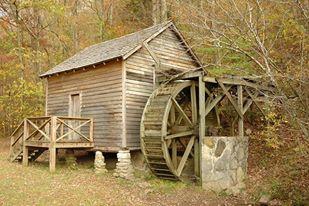The early history of Big Ridge leading to the creation of Norris Lake
The relationship between early settlers and Native Americans was and still is a very controversial subject.
Although it was a significant part of the history of early America, it was a short time period. It was not long after the first settlers of European descent had settled here that the hills and hollers were filled with people etching out a living.
They mostly farmed, growing corn and tobacco along with a sustenance garden. Within half a century the land that we now know as Big Ridge State Park was divided out into parcels of land that was owned by more than a hundred different families. People spread further from the prime real estate near the riverbanks to poor farmland on the other side of the ridges.
The land that was settled first was the fertile soil along the Clinch River. By the time of the Civil War, the population had grown so much that a town had developed along the path of the river that was named Loyston.
There was a general store in town where folks could buy and trade items. Several grist mills were along the creeks in every direction. Family names like Hutchinson, Loy, Stooksbury and Longmire are still common in this area from the descendents of these settlers.
One of the state’s first female sheriffs was Della Hutcheson. Della was born Della Lyons until she married L.B. Hutcheson in 1884 when she was 15 years old. Her husband L.B. became the sheriff of Union Co. in 1930.
On Dec. 6, 1935, L.B. was brutally shot and killed by a convict on the run. Afterwards the Union County court made Della the sheriff in his place. The year after the death of Della’s husband, she as well as hundreds of people were displaced by the creation of Norris Lake.
TVA brought power to the valley. The Tennessee Valley Authority was formed by the federal government to be involved in flood control of many the tributaries of the Tennessee Valley. Norris Lake was named after a Nebraska senator that advocated for the project that became the first of many large dams built by the TVA. The project had many benefits.
Flood control and electricity were the benefits that were advertised as being brought to the area. The sacrifice was the displacement of many small farming families. People like Della Hutcheson would lose their farm for the creation of the lake.
Electricity was going to be one of the greatest gains for the progress of the area. The electricity would also help to power a plant in Oak Ridge that would help build a weapon that would change the world.
Norris Lake now draws thousands of people a year for recreational boating and fishing. The dam still gives the area a significant amount of power used for electricity. Much of the surrounding land has become public lands that are used as government management land like Chuck Swan and for public recreation like Big Ridge State Park.
The town of Loyston was lost by the flooding of the lake, but not its history. A land that was once farmland is now mostly undeveloped woodlands giving a natural landscape along the shores of Norris Lake, perfect for a beautiful and peaceful getaway.
In my next article I will share the story of the Civilian Conservation Corps and its involvement in the creation of Big Ridge Recreational Area as well as many other public parks across the nation.
- Log in to post comments

